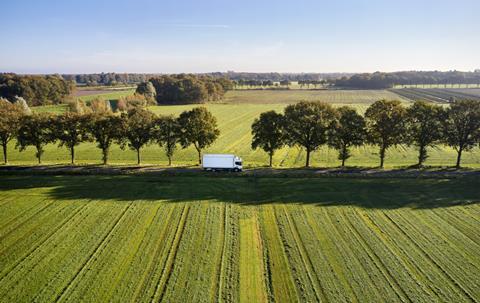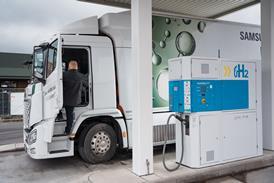A new Zemo Partnership study illustrates how a greenhouse gas-based fuel duty structure could incentivise the use of low-carbon renewable fuels in difficult-to-electrify transportation applications and speed the transition to net zero emissions.
The latest Zemo Partnership research, titled ‘Decarbonising Heavy Duty Vehicles and Machinery,’ investigates a pricing mechanism for a fuel duty reduction as well as the potential Green House Gas emission advantages of using high blend renewable fuels (HBRF) in heavy vehicles.
The availability, cost, and acceptance of electric and hydrogen technologies is now surpassing the need to decarbonise heavy duty vehicles (HDV) and large non-road vehicles. Zemo’s 2021 research emphasised the prospects to rapidly decarbonise these cars by utilising high mix renewable fuels such as biodiesel and hydrotreated vegetable oil (HVO), which lower GHG emissions by 85%-90% when produced from biogenic waste feedstocks.

According to the 2021 study, a market average of 30% HBRF used in place of fossil fuels (diesel and natural gas) could save the sector an additional 46 million tonnes CO2e over the next decade (equivalent to more than two years total UK emissions from HGVs, according to Government statistics), with savings continuing until 2050.
The newest analysis expands on the previous report by demonstrating how a new fuel duty structure may be devised to address one of the major impediments to the adoption of low carbon, sustainability-verified, renewable fuels.
Zemo conducted a detailed study of the whole-life costs for HDV and heavy non-road vehicle fleets running on renewable fuel vs conventional (fossil-derived) diesel for this paper, which was funded by the Renewable Transport Fuel Association (RTFA) and UK Petroleum Industry Association (UKPIA).
The team discovered the’sweet spot,’ in which operators may save considerable amounts of carbon at a low cost to the Treasury, with duty reductions matching the value of carbon savings.
“Liquid fuels will be needed for a long time, especially for heavy duty vehicles where electric and hydrogen options aren’t yet ready. Low carbon liquids can reduce well to wheel GHG emissions by up to 90% now and can be delivered using our existing infrastructure.” said Elizabeth de Jong, CEO of UKPIA. “But to be attractive at scale to fleet operators, we need to see real incentives such as new duty rates that reward operators for using lower carbon fuels. I welcome this timely report from Zemo which assesses that changes to duty could offer a viable, early decarbonisation route for HDVs.”
Gaynor Hartnell, Chief Executive of the RTFA said: “Bringing GHG emissions down rapidly is crucial and savings achieved sooner deliver more benefit, as CO2 build up in the atmosphere is cumulative. There is huge scope for increasing the blend levels used in heavy duty vehicles during the transition to electrification, and the earlier this starts the better.”
Download your copy of the report













